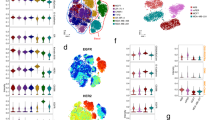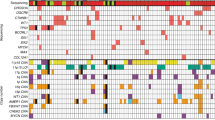Abstract
In order to examine in detail the sensitivity to chemotherapy of tumour cells at various organ sites and at various stages of metastasis, we have used a series of cell lines, all selected from sister subpopulations derived from a single mouse mammary tumour, which can be distinguished and quantitated from normal cells and from each other through growth in selective medium. For the studies described here, we used two lines, 4T07 and 66FAR, which will form colonies in vitro in medium containing 60 microM 6-thioguanine or 330 microM 2,6-diaminopurine, respectively. Both cell lines have similar sensitivity to the test chemotherapeutic agent, melphalan, in vitro. These two tumour cell lines were treated with melphalan in vivo, when growing either in lungs as experimental metastases at various times after cell injection or as palpable tumours growing subcutaneously. Responses to various doses of melphalan were measured by removing lungs or subcutaneous tumours and performing colony-forming assays in selective medium. The data indicate marked shifts in sensitivity as a function of metastatic stage. Analyses of dose-response curves show that both cell lines were similarly sensitive to melphalan at early times (45 min) after cell injection i.v. but became less sensitive at an intermediate time after injection (3 days). Differences between the two lines became apparent at later times after i.v. injection (by day 8 or 9) and in subcutaneous tumours, where a marked reduction in the shoulder of the dose response curve was seen in line 4T07, resulting in sensitivity equal to or greater than the of early times, whereas the dose response parameters of 66FAR remained at those of the intermediate time point. These results show that, in heterogeneous tumours, individual subpopulations of tumour cells may respond differently to chemotherapeutic agents at various disease stages. In vitro measures of tumour sensitivity do not predict these changes in in vivo sensitivity. Model systems similar to the one described here may yield information which will eventually be useful in maximising the efficacy of clinically relevant adjuvant chemotherapy regimens.
This is a preview of subscription content, access via your institution
Access options
Subscribe to this journal
Receive 24 print issues and online access
$259.00 per year
only $10.79 per issue
Buy this article
- Purchase on Springer Link
- Instant access to full article PDF
Prices may be subject to local taxes which are calculated during checkout
Similar content being viewed by others
Author information
Authors and Affiliations
Rights and permissions
About this article
Cite this article
Miller, B., Miller, F., Machemer, T. et al. Melphalan sensitivity as a function of progressive metastatic growth in two subpopulations of a mouse mammary tumour. Br J Cancer 68, 18–25 (1993). https://doi.org/10.1038/bjc.1993.280
Issue Date:
DOI: https://doi.org/10.1038/bjc.1993.280
This article is cited by
-
Development of a novel bi-specific monoclonal antibody approach for tumour targeting
British Journal of Cancer (1999)



